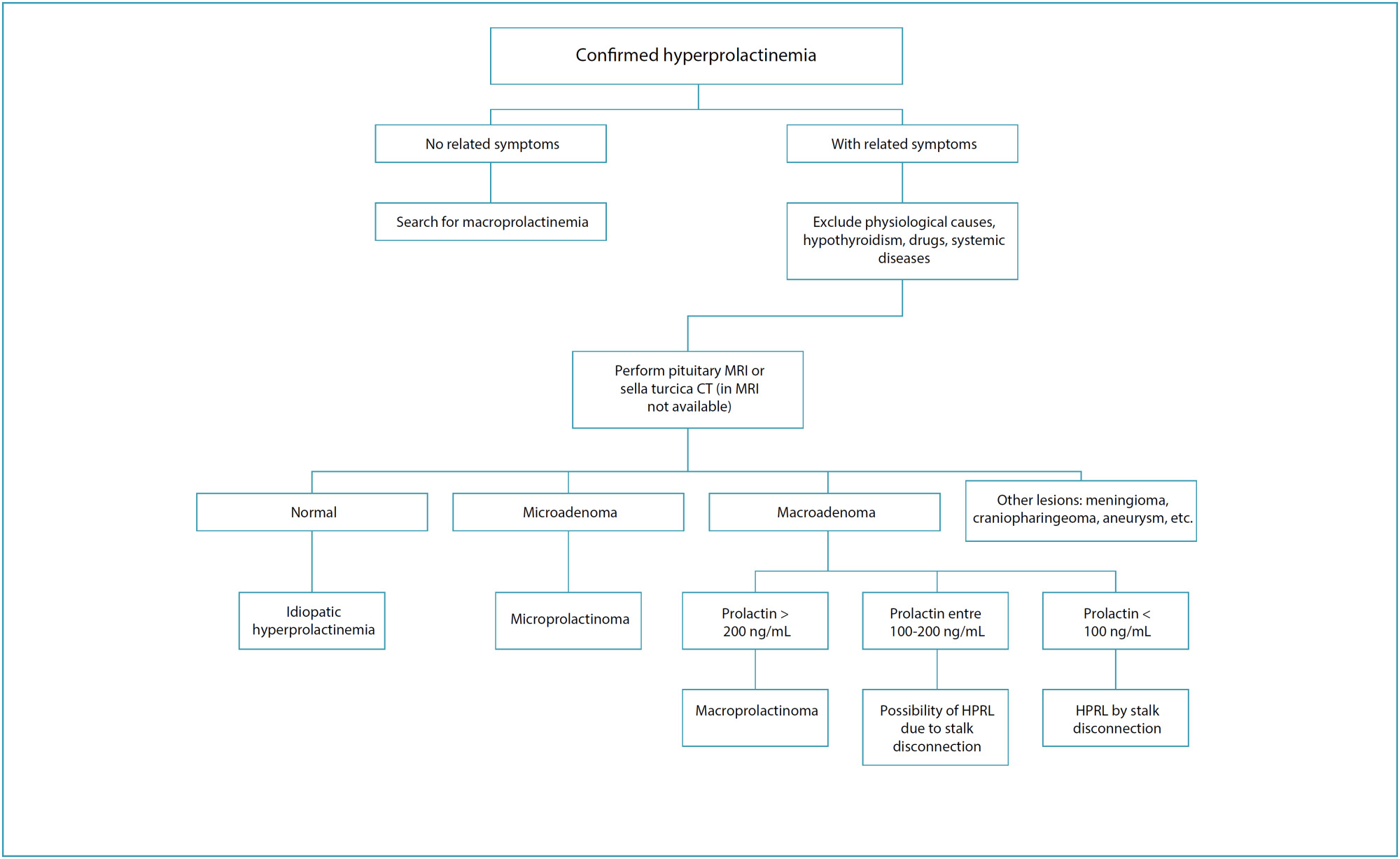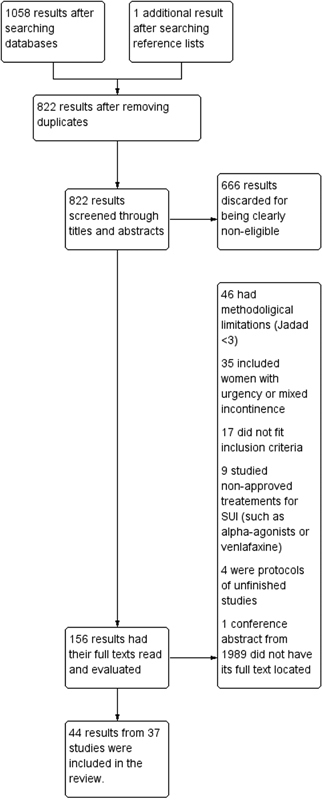-
Editorial09-06-2024
The importance of the quadrivalent HPV vaccine in the elimination of cervical cancer in Brazil
Revista Brasileira de Ginecologia e Obstetrícia. 2024;46:e-rbgoedt4
Abstract
EditorialThe importance of the quadrivalent HPV vaccine in the elimination of cervical cancer in Brazil
Revista Brasileira de Ginecologia e Obstetrícia. 2024;46:e-rbgoedt4
Views240HPV vaccination program in Brazil The introduction of the quadrivalent HPV vaccine Gardasil 4V into the Brazilian National Immunization Schedule was approved by the National Committee for Technology Incorporation into the Unified Health System (Conitec) and incorporated into the National Immunization Schedule in 2014. This decision was based on a previous cost-effectiveness study that analyzed […]See more -
Original Article09-06-2024
A new screening of preterm birth in gestation with short cervix after pessary plus progesterone
Revista Brasileira de Ginecologia e Obstetrícia. 2024;46:e-rbgo39i
Abstract
Original ArticleA new screening of preterm birth in gestation with short cervix after pessary plus progesterone
Revista Brasileira de Ginecologia e Obstetrícia. 2024;46:e-rbgo39i
Views206See moreAbstract
Objective
This study aims to create a new screening for preterm birth < 34 weeks after gestation with a cervical length (CL) ≤ 30 mm, based on clinical, demographic, and sonographic characteristics.
Methods
This is a post hoc analysis of a randomized clinical trial (RCT), which included pregnancies, in middle-gestation, screened with transvaginal ultrasound. After observing inclusion criteria, the patient was invited to compare pessary plus progesterone (PP) versus progesterone only (P) (1:1). The objective was to determine which variables were associated with severe preterm birth using logistic regression (LR). The area under the curve (AUC), sensitivity, specificity, and positive predictive value (PPV) and negative predictive value (NPV) were calculated for both groups after applying LR, with a false positive rate (FPR) set at 10%.
Results
The RCT included 936 patients, 475 in PP and 461 in P. The LR selected: ethnics white, absence of previous curettage, previous preterm birth, singleton gestation, precocious identification of short cervix, CL < 14.7 mm, CL in curve > 21.0 mm. The AUC (CI95%), sensitivity, specificity, PPV, and PNV, with 10% of FPR, were respectively 0.978 (0.961-0.995), 83.4%, 98.1%, 83.4% and 98.1% for PP < 34 weeks; and 0.765 (0.665-0.864), 38.7%, 92.1%, 26.1% and 95.4%, for P < 28 weeks.
Conclusion
Logistic regression can be effective to screen preterm birth < 34 weeks in patients in the PP Group and all pregnancies with CL ≤ 30 mm.
-
Review Article09-04-2024
Artificial intelligence in mammography: a systematic review of the external validation
Revista Brasileira de Ginecologia e Obstetrícia. 2024;46:e-rbgo71
Abstract
Review ArticleArtificial intelligence in mammography: a systematic review of the external validation
Revista Brasileira de Ginecologia e Obstetrícia. 2024;46:e-rbgo71
Views300See moreAbstract
Objective
To conduct a systematic review of external validation studies on the use of different Artificial Intelligence algorithms in breast cancer screening with mammography.
Data source
Our systematic review was conducted and reported following the PRISMA statement, using the PubMed, EMBASE, and Cochrane databases with the search terms “Artificial Intelligence,” “Mammography,” and their respective MeSH terms. We filtered publications from the past ten years (2014 – 2024) and in English.
Study selection
A total of 1,878 articles were found in the databases used in the research. After removing duplicates (373) and excluding those that did not address our PICO question (1,475), 30 studies were included in this work.
Data collection
The data from the studies were collected independently by five authors, and it was subsequently synthesized based on sample data, location, year, and their main results in terms of AUC, sensitivity, and specificity.
Data synthesis
It was demonstrated that the Area Under the ROC Curve (AUC) and sensitivity were similar to those of radiologists when using independent Artificial Intelligence. When used in conjunction with radiologists, statistically higher accuracy in mammogram evaluation was reported compared to the assessment by radiologists alone.
Conclusion
AI algorithms have emerged as a means to complement and enhance the performance and accuracy of radiologists. They also assist less experienced professionals in detecting possible lesions. Furthermore, this tool can be used to complement and improve the analyses conducted by medical professionals.
-
FEBRASGO POSITION STATEMENT08-15-2024
Difficult fetal extraction in cesarean section: Number 8 – 2024
Revista Brasileira de Ginecologia e Obstetrícia. 2024;46:e-FPS08
Abstract
FEBRASGO POSITION STATEMENTDifficult fetal extraction in cesarean section: Number 8 – 2024
Revista Brasileira de Ginecologia e Obstetrícia. 2024;46:e-FPS08
-
Letter to the Editor08-05-2024
Comment on: Prediction and secondary prevention of preeclampsia from the perspective of public health management – the initiative of the State of Rio de Janeiro
Revista Brasileira de Ginecologia e Obstetrícia. 2024;46:e-rbgo80
Abstract
Letter to the EditorComment on: Prediction and secondary prevention of preeclampsia from the perspective of public health management – the initiative of the State of Rio de Janeiro
Revista Brasileira de Ginecologia e Obstetrícia. 2024;46:e-rbgo80
Views190Dear Editor,We read with interest the article “Prediction and secondary prevention of preeclampsia from the perspective of public health management—the initiative of the State of Rio de Janeiro,” published by Braga and colleagues.() The authors recommend universal treatment (for all pregnant women) with elemental calcium at 1500 mg per day and identification of women at […]See more -
Original Article07-26-2024
Effect of subchorionic hematoma on first-trimester maternal serum free β-hCG and PAPP-A levels
Revista Brasileira de Ginecologia e Obstetrícia. 2024;46:e-rbgo66
Abstract
Original ArticleEffect of subchorionic hematoma on first-trimester maternal serum free β-hCG and PAPP-A levels
Revista Brasileira de Ginecologia e Obstetrícia. 2024;46:e-rbgo66
Views225Abstract
Objective
This study aimed to investigate the effects of the presence of subchorionic hematoma (SH) in early pregnancies with threatened miscarriage (TM) on levels of first-trimester maternal serum markers, pregnancy-associated plasma protein-A (PAPP-A), and free β-human chorionic gonadotropin (β-hCG) levels.
Methods
The data of TM cases with SH in the first trimester between 2015 and 2021 were evaluated retrospectively. The data of age and gestational age-matched TM cases without SH were also assessed to constitute a control group. Demographic characteristics, obstetric histories, ultrasonographic findings, and free β-hCG and PAPP-A levels of the groups were compared.
Results
There were 119 cases in the study group and 153 cases in the control group. The median vertical and longitudinal lengths of the SH were 31 mm and 16 mm. The median age of both groups was similar (p=0.422). The MoM value of PAPP-A was 0.088 (.93) in the study group and 0.9 (0.63) in the control group (p=0.519). Similarly, the MoM value of free β-hCG was 1.04 (0.78) in the study group and 0.99 (0.86) in the control group (p=0.66). No significant relationship was found in the multivariate analysis between free β-hCG MoM, PAPP-A MoM, age, gravida, and vertical and longitudinal lengths of the hematoma (p>0.05).
Conclusion
The level of PAPP-A and free β-hCG were not affected by the SH. Therefore, these markers can be used reliably in TM cases with SH for the first-trimester fetal aneuploidy screening test.
Key-words Abortion, threatenedAneuploidybiomarkersChorionic gonadotropinPregnancy trimester, firstPregnancy-associated plasma protein-ASubchorionic hematomaSee more -
Original Article07-26-2024
Maternal deaths caused by eclampsia in Brazil: a descriptive study from 2000 to 2021
Revista Brasileira de Ginecologia e Obstetrícia. 2024;46:e-rbgo65
Abstract
Original ArticleMaternal deaths caused by eclampsia in Brazil: a descriptive study from 2000 to 2021
Revista Brasileira de Ginecologia e Obstetrícia. 2024;46:e-rbgo65
Views250See moreAbstract
Objective
Eclampsia is a hypertensive disorder that occurs during pregnancy and can lead to death. The literature has gaps by not providing comprehensive data on the epidemiology of the disease, restricting analysis to limited temporal intervals and geographical locations. This study aims to characterize the epidemiological profile of women who died from eclampsia in Brazil from 2000 to 2021.
Methods
The maternal mortality data were obtained from the Sistema de Informações sobre Mortalidade, with the following variables of interest selected: “Federative Unit,” “Year,” “Age Range,” “Race/Color,” and “Education Level.” The collection of the number of live births for data normalization was conducted in the Sistema de Informações sobre Nascidos Vivos. Statistical analyses were performed using GraphPad Prism, calculating odds ratio for variables and fixing number of deaths per 100,000 live births for calculating maternal mortality ratio (MMR).
Results
There was a downward trend in maternal mortality rate during the study period. Maranhão stood out as the federative unit with the highest MMR (17 deaths per 100.000 live births). Mothers aged between 40 and 49 years (OR = 3.55, CI: 3.11–4.05) presents higher MMR. Additionally, black women showed the highest MMR (OR = 4.67, CI: 4.18–5.22), as well as mothers with no educational background (OR = 5.83, CI: 4.82–7.06).
Conclusion
The epidemiological profile studied is predominantly composed of mothers with little or no formal education, self-declared as Black, residing in needy states and with advanced aged. These data are useful for formulating public policies aimed at combating the issue.
-
Original Article07-26-2024
Agreement between frozen section and histopathology to detect malignancy in adnexal masses according to size and morphology by ultrasound
Revista Brasileira de Ginecologia e Obstetrícia. 2024;46:e-rbgo63
Abstract
Original ArticleAgreement between frozen section and histopathology to detect malignancy in adnexal masses according to size and morphology by ultrasound
Revista Brasileira de Ginecologia e Obstetrícia. 2024;46:e-rbgo63
Views182See moreAbstract
Objective
Management of suspect adnexal masses involves surgery to define the best treatment. Diagnostic choices include a two-stage procedure for histopathology examination (HPE) or intraoperative histological analysis – intraoperative frozen section (IFS) and formalin-fixed and paraffin-soaked tissues (FFPE). Preoperative assessment with ultrasound may also be useful to predict malignancy. We aimed at determining the accuracy of IFS to evaluate adnexal masses stratified by size and morphology having HPE as the diagnostic gold standard.
Methods
A retrospective chart review of 302 patients undergoing IFS of adnexal masses at Hospital de Clínicas de Porto Alegre, between January2005 and September2011 was performed. Data were collected regarding sonographic size (≤10cm or >10cm), characteristics of the lesion, and diagnosis established in IFS and HPE. Eight groups were studied: unilocular lesions; septated/cystic lesions; heterogeneous (solid/cystic) lesions; and solid lesions, divided in two main groups according to the size of lesion, ≤10cm or >10cm. Kappa agreement between IFS and HPE was calculated for each group.
Results
Overall agreement between IFS and HPE was 96.1% for benign tumors, 96.1% for malignant tumors, and 73.3% for borderline tumors. Considering the combination of tumor size and morphology, 100% agreement between IFS and HPE was recorded for unilocular and septated tumors ≤10cm and for solid tumors.
Conclusion
Stratification of adnexal masses according to size and morphology is a good method for preoperative assessment. We should wait for final HPE for staging decision, regardless of IFS results, in heterogeneous adnexal tumors of any size, solid tumors ≤10cm, and all non-solid tumors >10cm.
Search
Search in:
Tag Cloud
Pregnancy (252)Breast neoplasms (104)Pregnancy complications (104)Risk factors (103)Menopause (88)Ultrasonography (83)Cesarean section (78)Prenatal care (71)Endometriosis (70)Obesity (61)Infertility (57)Quality of life (55)prenatal diagnosis (51)Women's health (48)Postpartum period (46)Maternal mortality (45)Pregnant women (45)Breast (44)Prevalence (43)Uterine cervical neoplasms (43)







